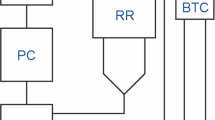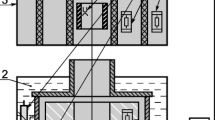The paper shows the necessity and relevance of performing precise specific heat measurements for the existing and newly synthesized substances and solids at low temperatures. The authors present GET 79-2020 State Primary Special Standard of the unit of specific heat of solids in the temperature range from 2 to 300 K, describing its design, operating principle, and the results of metrological examination. GET 79-2020 comprises the developed reference throttling cryostat and a cell for measuring specific heat that ensure efficient and prompt cooling of the test sample, as well as a reduction in uncontrolled heat fluxes, during measurement. GET 79-2020 can realize the unit of specific heat of solids within the range of 0.03–718 J/(kg·K) and the temperature range of 2–300 K. A method for measuring specific heat using the developed cell is described. The authors examine the metrological characteristics of GET 79-2020, estimating the uncertainty budget for realizing the unit of specific heat of solids. The obtained results extend the temperature range of measurements, expanding the fleet of working standards (measures) for heat capacity measuring instruments, verified using GET 79-2020.




Similar content being viewed by others
Notes
Order No. 866 of the Federal Agency for Technical Regulation and Metrology of May 6, 2020 “On approval of the State Primary Special Standard of the unit of specific heat of solids in the temperature range from 2 to 300 K.”
References
I. E. Paukov, Ju. A. Kovalevskaja, I. A. Kiseleva, and T. N. Shuriga, Teplojomkost’ i Termodinamicheskie Svojstva Prirodnogo Biotita v Intervale 5.7–300 K, Issled. Ross., electronic scientific journal, available at: http://www.elibrary.lt/resursai/Uzsienio%20leidiniai/MFTI/2006/066.pdf (accessed: March 6, 2023).
V. N. Naumov, A. B. Tagaev, and A. E. Musikhin, The Phonon Density of States from the Experimental Heat Capacitance, Vestn. NGU. Ser.: Fizika, 7, No. 3, 102–113 (2012).
S. Sh. Rekhviashvili, Tech. Phys., 53, No. 12, 1586–1590 (2008), https://doi.org/10.1134/S1063784208120086.
E. I. Salamatov, A. V. Taranov, E. N. Khazanov, E. V. Charnaya, and E. V. Shevchenko, J. Exp. Theor. Phys., 125, 768–774 (2017), https://doi.org/10.1134/S1063776117100144.
V. D. Bogdanov, A. A. Simdyankin, and A. V. Nazarenko, Study of Thermal Parameters of Far Eastern Sea Cucumber when Freezing, Vestn. AGTU. Ser.: Rybn. Khoz., No. 4, 145–152 (2016).
V. A. Paramonova and V. N. Kudryavtsev, Performance Evaluation of Thermal Raw Peanut, Sci. J. NRU ITMO. Ser.: Proc. Food Prod. Equip., No. 2, 98–111 (2015).
L. T. Denisova, L. G. Chumilina, and V. M. Denisov, High-Temperature Heat Capacity of Oxide Compounds of Barium Oxide — Iron Oxide and Calcium Oxide–Bismuth Oxide Systems, J. Sib. Fed. Univ. Chem., 6, No. 3, 299–302 (2013).
V. P. Meshalkin, V. I. Bobkov, M. I. Dli, A. V. Garabadzhiu, S. V. Panchenko, and V. A. Orekhov, Experimental Studies of Physicochemical Process of Heating ore Phosphorites, Ross. Khim. Zh., 66, No. 3, 13–22 (2022).
M. S. Zhelnin, O. A. Plekhov, M. A. Semin, and L. Yu. Levin, Numerical Solution for an Inverse Problem about Determination of Volumetric Heat Capacity of Rock Mass During Artificial Freezing, PNRPU Mech. Bull., No. 4, 56–75 (2017), https://doi.org/10.15593/perm.mech/2017.4.05.
N. V. Holshev, A. A. Lavrenchenko, A. V. Prokhorov, and D. N. Konovalov, The Method of Thermal Calculation of Automotive Disk Brake Assemblies, Bull. Civ. Eng., 81, No. 4, 203–208 (2020), https://doi.org/10.23968/1999-5571-2020-17-4-203-208.
A. A. Petukhov, B. G. Potapov, V. G. Kytin, L. V. Yurov, E. G. Aslanyan, and A. N. Shchipunov, State Primary Special Standard of the Unit of Thermal Conductivity of Solids in the Temperature Range from 2 to 300 K GET 141-2020, Izmer. Tekh., No. 9, 3–7 (2022), https://doi.org/10.32446/0368-1025it.2022-9-3-7.
V. G. Kytin, M. Yu. Gavalyan, A. A. Petukhov, B. G. Potapov, Ya. E. Razhba, E. G. Aslanyan, and A. N. Schipunov, Meas. Tech., 64, No. 8, 613–621 (2021), https://doi.org/10.1007/s11018-021-01980-8.
M. Yu. Gavalyan and V. G. Kytin, Construction of the Acoustic Gas Thermometer in the Range from 79 to 273.16 K, Almanac of Modern Metrology, 28, No. 4, 28–34 (2021).
Author information
Authors and Affiliations
Corresponding author
Additional information
Translated from Izmeritel’naya Tekhnika, No. 3, pp. 4–9, March, 2023.
Rights and permissions
Springer Nature or its licensor (e.g. a society or other partner) holds exclusive rights to this article under a publishing agreement with the author(s) or other rightsholder(s); author self-archiving of the accepted manuscript version of this article is solely governed by the terms of such publishing agreement and applicable law.
About this article
Cite this article
Petukhov, A.A., Potapov, B.G., Kytin, V.G. et al. Get 79-2020 State Primary Special Standard of the Unit of Specific Heat of Solids in the Temperature Range from 2 to 300 K. Meas Tech 66, 143–148 (2023). https://doi.org/10.1007/s11018-023-02202-z
Received:
Accepted:
Published:
Issue Date:
DOI: https://doi.org/10.1007/s11018-023-02202-z




